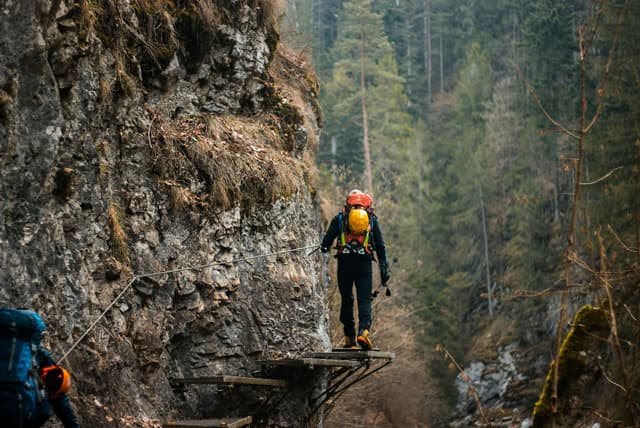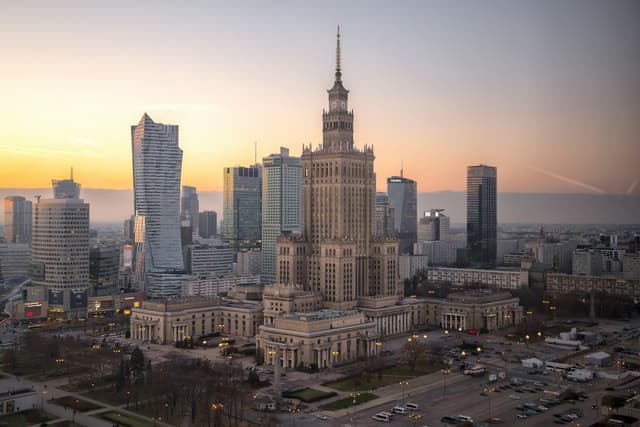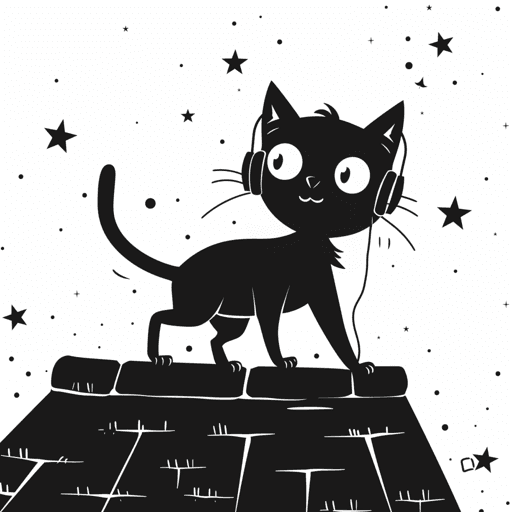Slovenský raj National Park vs. Warsaw, Poland
Slovenský raj National Park
Slovenský raj National Park is one of Slovakia’s most stunning natural areas. The name means "Slovak Paradise," and it fits—the park is a maze of deep gorges, waterfalls, and dense forests, crisscrossed by ladders, wooden bridges, and chain-assisted pathways that turn hiking into an adventure. If you like nature with a bit of adrenaline, this place is for you. The park is in eastern Slovakia, covering nearly 200 square kilometers of rugged limestone terrain. Over centuries, the Hornád River and its tributaries carved dramatic canyons and ravines into the landscape. The most famous of these is Suchá Belá, a gorge with wooden walkways and metal ladders leading past waterfalls. Prielom Hornádu, a breathtaking river canyon, is another highlight, where hikers traverse cliffside ledges and wade through the river itself. One of the most famous viewpoints is Tomášovský výhľad, a rocky outcrop offering sweeping views over the Hornád valley. Rock climbers love it, but you don’t need ropes...
Warsaw, Poland
Warsaw is the capital of Poland, sitting on the Vistula River in the east-central part of the country. With nearly 1.9 million people in the city and over 3 million in the wider metropolitan area, it’s Poland’s biggest city. It’s a place where old and new collide—modern skyscrapers stand next to rebuilt historic districts, and its skyline is a mix of glass towers and ornate churches. The Old Town, destroyed in World War II and painstakingly rebuilt, is now a UNESCO World Heritage Site. Walking through its cobblestone streets, you’ll find the Royal Castle and the colorful Market Square. Not far off is the Royal Route, a stretch of old palaces, churches, and the Presidential Palace, leading down to the grand Wilanów Palace and its gardens. Despite the scars of war—most of the city was flattened during WWII—Warsaw bounced back fast. The post-war communist era left a mark with grey apartment blocks and the towering Palace of Culture and Science, a gift from the Soviet Union that’s still...
Reviews
Reviewed on 2/28/2025
Reviews
Reviewed on 2/25/2025
Friendly towards foreigners. Affordable. Most people speak English. Safe. Not great in the winter though. The weather is crap, you never get to see the sun, and air quality gets bad. Still, summers in Warsaw are great, so I give it 4 stars.
| Item | Votes | Upvote |
|---|---|---|
| Beautiful | 1 | |
| Great for the adventurous | 1 |
| Item | Votes | Upvote |
|---|---|---|
| Can be scary | 1 |
| Item | Votes | Upvote |
|---|---|---|
| Fun | 2 | |
| Affordable | 2 | |
| Safe | 2 | |
| Most people speak English | 2 |
| Item | Votes | Upvote |
|---|---|---|
| Practically no sunlight in the winter | 1 |
Frequently Asked Questions
Slovenský raj National Park is ideal for adventure seekers, offering thrilling hiking experiences through gorges and waterfalls, with opportunities for rock climbing and exploring caves. In contrast, Warsaw provides rich cultural experiences, showcasing its history through museums, historic sites, and vibrant city life. If you prefer outdoor adventures, Slovenský raj is the better choice, while Warsaw is perfect for those interested in culture and history.
Warsaw is generally considered more affordable for travelers, with a variety of budget-friendly accommodations, dining options, and activities. Slovenský raj National Park may have some costs associated with guided tours or equipment rentals for adventure activities. Therefore, if budget is a primary concern, Warsaw may be the better option.
Slovenský raj National Park can be exciting for families who enjoy outdoor activities and nature, but it may not be suitable for very young children due to its challenging trails and heights. Warsaw, on the other hand, offers a range of family-friendly attractions, including parks, museums, and cultural events, making it more suitable for families with children of all ages.
Slovenský raj National Park generally has better weather for outdoor activities, especially in the summer when hiking trails are accessible and the scenery is at its best. Warsaw experiences cold, snowy winters with limited sunlight, which can hinder outdoor activities. Therefore, for outdoor enthusiasts, Slovenský raj is the preferable destination.
Slovenský raj National Park, meaning 'Slovak Paradise,' is known for its stunning natural beauty, featuring deep gorges, waterfalls, and dense forests. The park offers adventurous hiking experiences with ladders, wooden bridges, and chain-assisted pathways, making it a popular destination for nature lovers and thrill-seekers.
Pros of visiting Slovenský raj National Park include its beautiful landscapes and the adventurous hiking opportunities it offers. However, a con is that some of the trails can be scary for those who are not accustomed to heights or rugged terrain.
Slovenský raj National Park is home to a diverse range of wildlife, including brown bears, wolves, lynxes, and golden eagles. The park's dense forests and meadows also support rare flowers and one of the highest concentrations of butterflies in Slovakia.
Main attractions in Slovenský raj National Park include the Suchá Belá gorge with its wooden walkways and metal ladders, the breathtaking Prielom Hornádu river canyon, and the famous viewpoint Tomášovský výhľad. Additionally, the UNESCO-listed Dobšinská Ice Cave, known for its massive ice formations, is a must-visit.
The best time to visit Slovenský raj National Park is during the summer months when the weather is ideal for hiking. However, it also attracts visitors in winter when the trails are transformed into cross-country ski routes, offering a different way to experience the park's beauty.
The pros of visiting Warsaw, Poland include its affordability, safety, and the fact that most people speak English, making it accessible for tourists. Additionally, the city is fun to explore with a mix of modern and historic attractions. However, a notable con is the lack of sunlight during the winter months, which can affect the overall experience.
Warsaw, the capital of Poland, has a complex history marked by destruction and resilience. Most of the city was flattened during World War II, but it was painstakingly rebuilt and is now a UNESCO World Heritage Site. The city remembers its past with museums like the POLIN Museum and monuments commemorating the Warsaw Uprising.
In Warsaw, you can explore the Old Town, visit the Royal Castle, and stroll through Łazienki Park. The city also offers a vibrant cultural scene with jazz festivals, classical concerts, and a buzzing nightlife. Food enthusiasts can enjoy traditional Polish dishes as well as modern cuisine in various restaurants and cafes.
Warsaw experiences typical Central European weather, with cold, snowy winters and warm, sometimes stormy summers. Spring and autumn can be mild and pleasant, but the weather can change quickly, so it's advisable to be prepared for varying conditions.
Yes, Warsaw is considered safe for tourists. The city has a low crime rate, and many visitors report feeling comfortable while exploring its streets and attractions. However, as with any major city, it's always wise to stay aware of your surroundings and take standard safety precautions.
Related Content & Alternatives
- 3
 1.Ireland
1.IrelandIreland is a small country with a big presence. Its capital, Dublin, is a lively city known for its mix of history, culture, and modern energy. Walk through the streets and you’ll find Georgian buildings, contemporary architecture, and plenty of places to hear live music or have a chat over a coffee—or a pint. The country has changed a lot over the past few decades. Once more rural and conservative, modern Ireland is progressive and increasingly diverse. It's known for its strong economy, driven in part by tech and finance companies that have set up shop in Dublin. But away from the business districts, life moves at a slower pace, especially in smaller towns and the countryside. Culture runs deep. Ireland has long punched above its weight in literature, music, and the arts. Writers like James Joyce and W.B. Yeats are still celebrated, but contemporary authors, filmmakers, and musicians continue to make their mark. Traditional Irish music hasn’t faded—it just sits comfortably alongside modern genres, often blending with them in interesting ways. Dance, especially the kind popularized by Riverdance, remains part of the cultural fabric without feeling forced or overly nostalgic. Food in Ireland has shifted from its meat-and-potatoes reputation. While hearty stews and fresh-baked bread are still common, there’s been a focus on fresh, local ingredients and creative cooking. In coastal areas, you’ll find top-quality seafood, and farmers' markets are popular across the country. Sport plays a big part in daily life. Gaelic games like football and hurling are uniquely Irish and deeply connected to local pride, but people follow soccer, rugby, and golf with just as much enthusiasm. While Ireland’s landscape is famous—green fields, dramatic coastlines, and rugged hills—it’s not just postcard scenery. Many people live in suburban areas, and the country has seen growing urban development. Still, nature is never far away. Ireland’s recent history includes both economic highs and lows, as well as major social changes. The country has legalized same-sex marriage, eased restrictions on abortion, and shifted away from the strong influence of the Catholic Church. Yet, traditional values like community and hospitality haven’t disappeared—they’ve just adapted to a changing world. At its core, Ireland is a place that blends the old with the new. It’s a country where centuries-old traditions coexist with modern ideas, where the past is present but doesn’t overshadow the future.
- 2
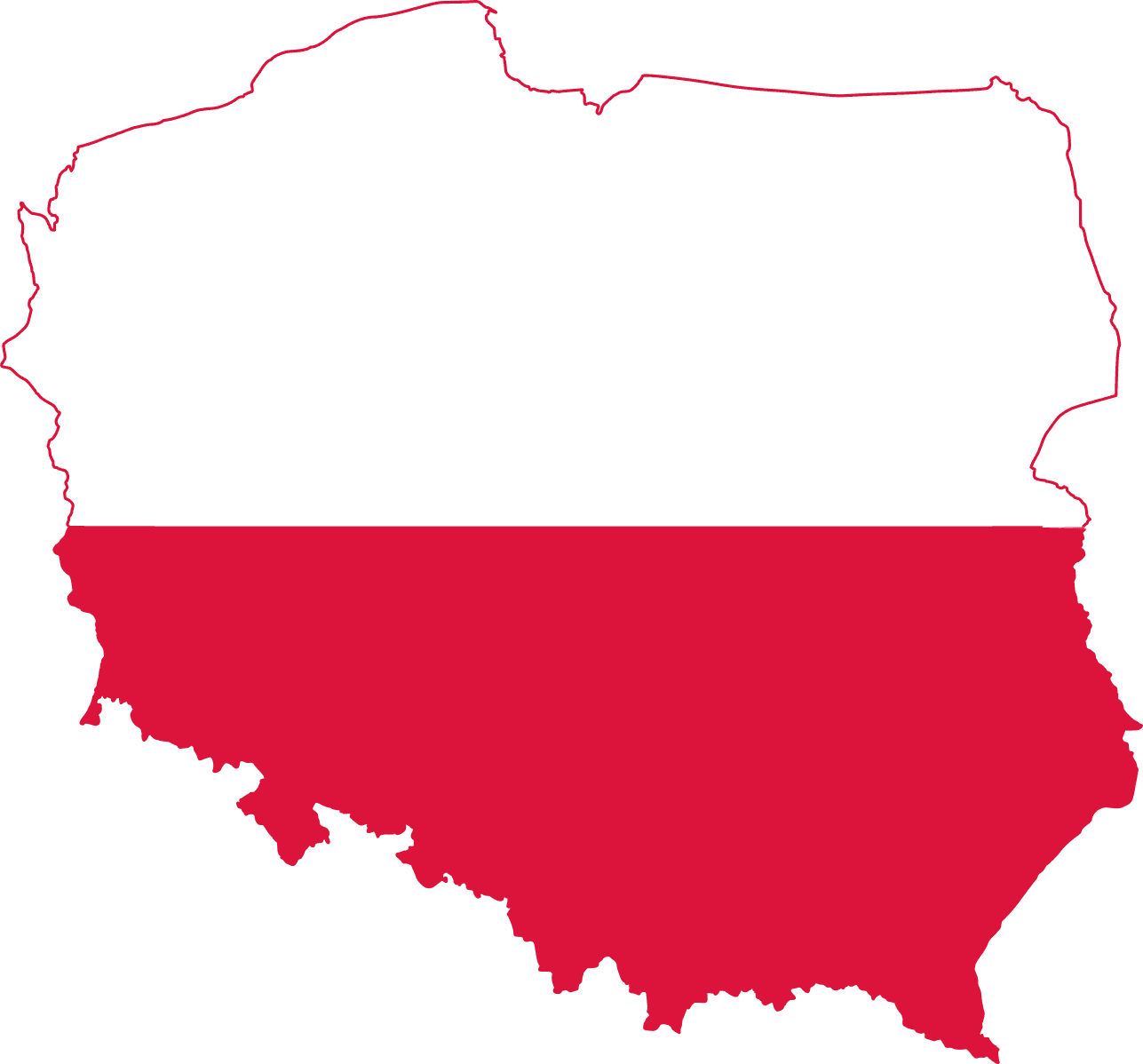 2.Poland
2.PolandPoland sits in Central Europe, stretching from the Baltic Sea in the north to mountains in the south. It shares borders with Germany to the west, Lithuania and Russia to the northeast, and several other countries along the east and south. Its landscape is a mix—flat plains in the center and north, and hilly or mountainous areas in the south. The coastline along the Baltic Sea is known for sandy beaches and coastal ridges. Inland, there are thousands of lakes, especially in the northeast, and big rivers like the Vistula and Oder cut across the land. The weather is temperate. Summers are warm, winters moderately cold. Rain tends to fall more during the summer months, and winters are becoming drier over time. Poland has deep roots in European history. It became a kingdom in 1025, later forming a powerful union with Lithuania. The Polish–Lithuanian Commonwealth was once one of Europe’s biggest states, with a unique political system. Poland's fortunes shifted in the late 18th century, when its neighbors carved it up, erasing it from maps for over a century. It re-emerged after World War I, only to be invaded at the start of World War II—a conflict that brought devastation and the horrors of the Holocaust. After the war, Poland fell under Soviet influence, but by 1989, it was the first Eastern Bloc country to shake off communism, thanks largely to the Solidarity movement. Today, Poland is a democratic country with a population of over 38 million. Warsaw, the capital, is the largest city. Others like Kraków, Gdańsk, and Wrocław are known for historic centers and vibrant culture. The economy is strong, with Poland being one of the larger economies in the European Union. Nature lovers come for places like the Tatra Mountains or the ancient Białowieża Forest, home to Europe’s largest land mammal—the European bison. There are 23 national parks, and over 17 sites are recognized as UNESCO World Heritage locations, from medieval town squares to the haunting Auschwitz-Birkenau memorial. Culturally, Poland has a rich tradition of music, literature, and art. Composer Frédéric Chopin and novelist Joseph Conrad both came from here. More recently, Poland’s fantasy literature, like Andrzej Sapkowski’s The Witcher series, has found global fame. Polish cuisine is hearty, with dishes like pierogi (dumplings), bigos (a cabbage and meat stew), and żurek (sour rye soup). Vodka has its roots here, but beer and wine are also popular. Sports are big in Poland—football (soccer) is a national passion, though volleyball and speedway racing attract large crowds too. The country also boasts top tennis players like Iga Świątek and mountaineers who’ve climbed the world’s highest peaks. Despite its complicated past, Poland today balances its historical heritage with modern growth. Old town squares sit beside new buildings, and traditions are kept alive alongside a fast-developing economy and infrastructure.
- 2
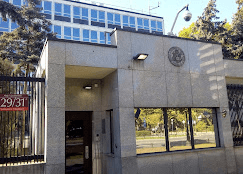 1.U.S. Embassy Warsaw
1.U.S. Embassy WarsawThe U.S. Embassy in Warsaw is on Aleje Ujazdowskie, surrounded by other embassies and government buildings. It’s a large, modern building with tight security. The embassy handles visas, helps U.S. citizens, supports American businesses, and works on diplomatic relations with Poland. It also promotes cultural exchanges and coordinates military cooperation between the two countries. Most people go there for travel documents or official matters. It’s straightforward—focused on diplomacy, paperwork, and keeping U.S.-Poland ties strong.
- 3
 1.Polish Cuisine
1.Polish CuisinePolish cuisine is all about comfort, rich flavors, and tradition. It’s the kind of food that sticks to your ribs, perfect for long winters and big family gatherings. Think hearty soups, meat-heavy dishes, and a lot of potatoes, cabbage, and bread. Pierogi are probably the most famous Polish dish—soft dumplings filled with anything from potato and cheese to meat, mushrooms, or sweet fruits. Then there’s bigos, a slow-cooked hunter’s stew packed with sauerkraut, fresh cabbage, sausage, and sometimes even wild game. It’s the kind of dish that gets better the longer it sits. If you like schnitzel, you’ll love kotlet schabowy, a breaded pork cutlet usually served with mashed potatoes and pickled cucumber salad. And for something truly Polish, there’s żurek—a sour rye soup with sausage and egg, often served in a bread bowl. Poland is also big on fermented foods like ogórki kiszone (pickled cucumbers) and kapusta kiszona (sauerkraut), which add a tangy kick to meals. And if you have a sweet tooth, Polish desserts won’t disappoint—pączki (fluffy doughnuts filled with rose jam), sernik (a dense cheesecake), and makowiec (a poppy seed roll) are just the start. To wash it all down? Vodka, of course. Poland has been perfecting it for centuries. But if you prefer something milder, there’s always hot tea with lemon or kompot, a homemade fruit drink. Polish food is all about big portions, simple ingredients, and bold flavors. It’s the kind of cooking that makes you feel at home, no matter where you’re from.
- 2
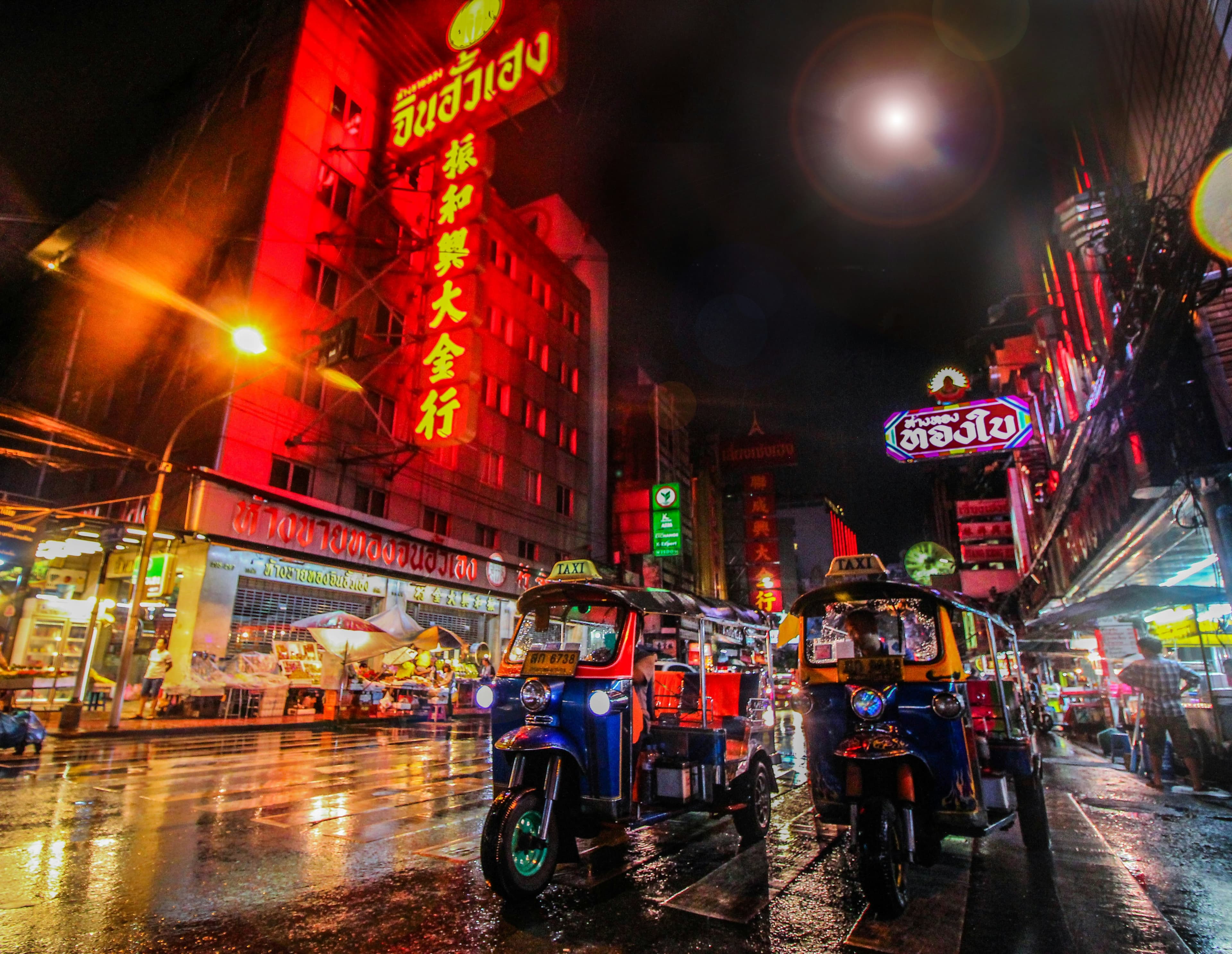 2.Bangkok, Thailand
2.Bangkok, ThailandBangkok is the capital of Thailand and its biggest city. It sits along the Chao Phraya River in central Thailand, spreading out over a large area with nearly 9 million people living in the city itself and over 17 million in the surrounding region. It’s a place that mixes old traditions with modern life. On one side, you’ve got ancient temples like Wat Pho and Wat Arun, and on the other, you’ve got massive shopping malls and skyscrapers. The city has been around for a long time, starting as a small trading post in the 15th century. It became the capital in 1782 when King Rama I moved it to the eastern bank of the river. Over the years, Bangkok has seen a lot—colonial pressures, modernization, political protests, and economic growth. It really took off in the 1980s and 1990s when foreign companies started setting up shop there. Bangkok is known for being busy and full of life. The streets are packed with cars, motorbikes, and tuk-tuks, which often leads to heavy traffic. Despite efforts to improve public transportation with skytrains and subways, traffic jams are still a common headache. The air can get polluted, but things have improved since the 1990s. Tourism plays a huge role in the city. People from around the world come to see places like the Grand Palace or enjoy the street food. Markets like Chatuchak and floating markets offer everything from clothes to local snacks. Khao San Road is popular with backpackers, full of budget hostels, bars, and street vendors. The city has a vibrant culture. Festivals like Songkran (Thai New Year) turn the streets into massive water fights, and during Loi Krathong, people float little boats with candles on the water. Bangkok also has a wild nightlife scene, ranging from lively bars to well-known red-light districts. There are two sides to Bangkok—modern malls, luxury hotels, and fine dining on one side, and narrow alleyways with street food stalls and local markets on the other. It’s a city that can feel overwhelming with the heat, traffic, and crowds, but it’s also full of energy, surprises, and contrasts.
- 0
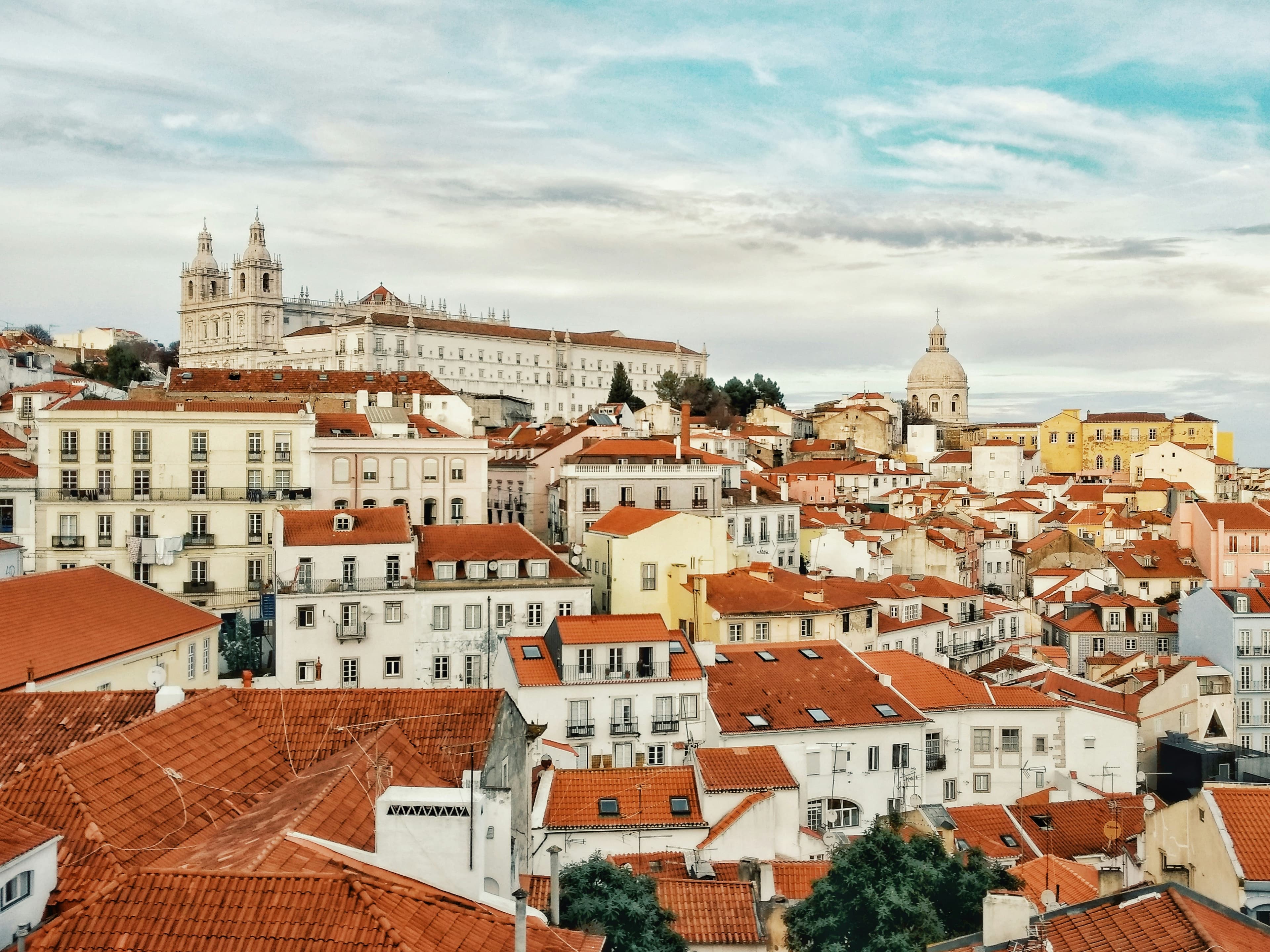 3.Lisbon, Portugal
3.Lisbon, PortugalLisbon sits on the western edge of Europe, right where the Tagus River meets the Atlantic Ocean. The city is built on a series of hills, which gives it sweeping views of red-tiled rooftops, cobbled streets, and the water beyond. Walking around, you’ll notice how the narrow lanes twist and turn, especially in neighborhoods like Alfama, where clotheslines stretch between buildings and the smell of grilled sardines lingers in the air. It’s a place where old and new blend together. You’ll find trams from the early 20th century rattling through streets, while modern glass buildings rise up in other parts of town. Down by the river, the Belém Tower and Jerónimos Monastery, both from the Age of Discovery, remind you that Portuguese explorers once set out from this very spot. Lisbon gets plenty of sunshine—nearly 3,000 hours a year. Summers are warm and dry, while winters stay cool and damp, but not too cold. Along the riverbanks, locals sit at cafés, sipping coffee or wine, while ferry boats glide across the water. Economically, Lisbon is Portugal’s hub, with banking, tech companies, and tourism bringing in most of the money. There’s a steady flow of visitors, drawn by the mild weather, historic sites, and laid-back vibe. Despite the city’s modernization, many residents struggle with rising living costs, especially with the influx of tourists and expats driving up housing prices. Culturally, the city is rich. Fado music echoes from small bars, and street art colors many walls. Markets buzz with fresh produce and seafood. People here celebrate Saint Anthony’s festival in June with street parties, music, and grilled sardines everywhere you look. Getting around is easy enough. There’s an extensive metro system, old-school trams, buses, and even ferries to cross the river. And if you fancy a bit of green space, parks like Eduardo VII Park or Monsanto Forest Park offer a break from the city streets. In short, Lisbon is a city that wears its history proudly but doesn’t mind embracing the modern world. It’s got a relaxed pace, friendly locals, and a charm that’s hard to shake.
- 2
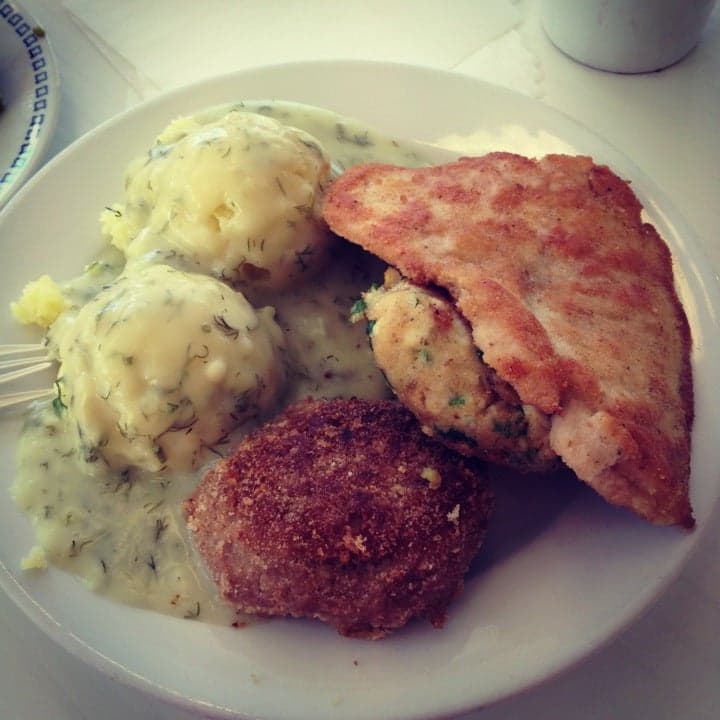 1.Bar Mleczny Słoneczny
1.Bar Mleczny SłonecznyAn authentic Polish milk bar. Cheap and delicious. Serves typical Polish foods. Probably the most affordable place in the center of Gdynia. Can get crowded at lunch time.
- 0
 2.Ogniem i Piecem
2.Ogniem i PiecemAffordable, casual pizza place in the center of Gdynia. They serve pizza by the slice, breakfasts, pastas and cakes. It's dog-friendly, has good music, friendly atmosphere and a vaguely "street style" hip vibe.
- 1
 1.Sand Valley Golf Resort
1.Sand Valley Golf ResortSand Valley’s Championship Course extends over 80 hectares of picturesque Polish country side. Rated by Golf World as TOP 100 Course in Europe it is the Home for the Lotos Polish Open of 2013 and 2014 (a Pro Golf Tour event). The resort offers a 18 hole championship course (par 72), 6 hole par 3 course, roofed 20 bay driving range and a large practice putting green. Tilander-Ristola co-designed Inland Links layout offers wide rumbling fairways and challenging green sites that are the foundation for an exiting round of golf. Everything is tied together by the vast waste bunkers, clever routing and 18 memorable holes that all have their own story to tell.
- 1
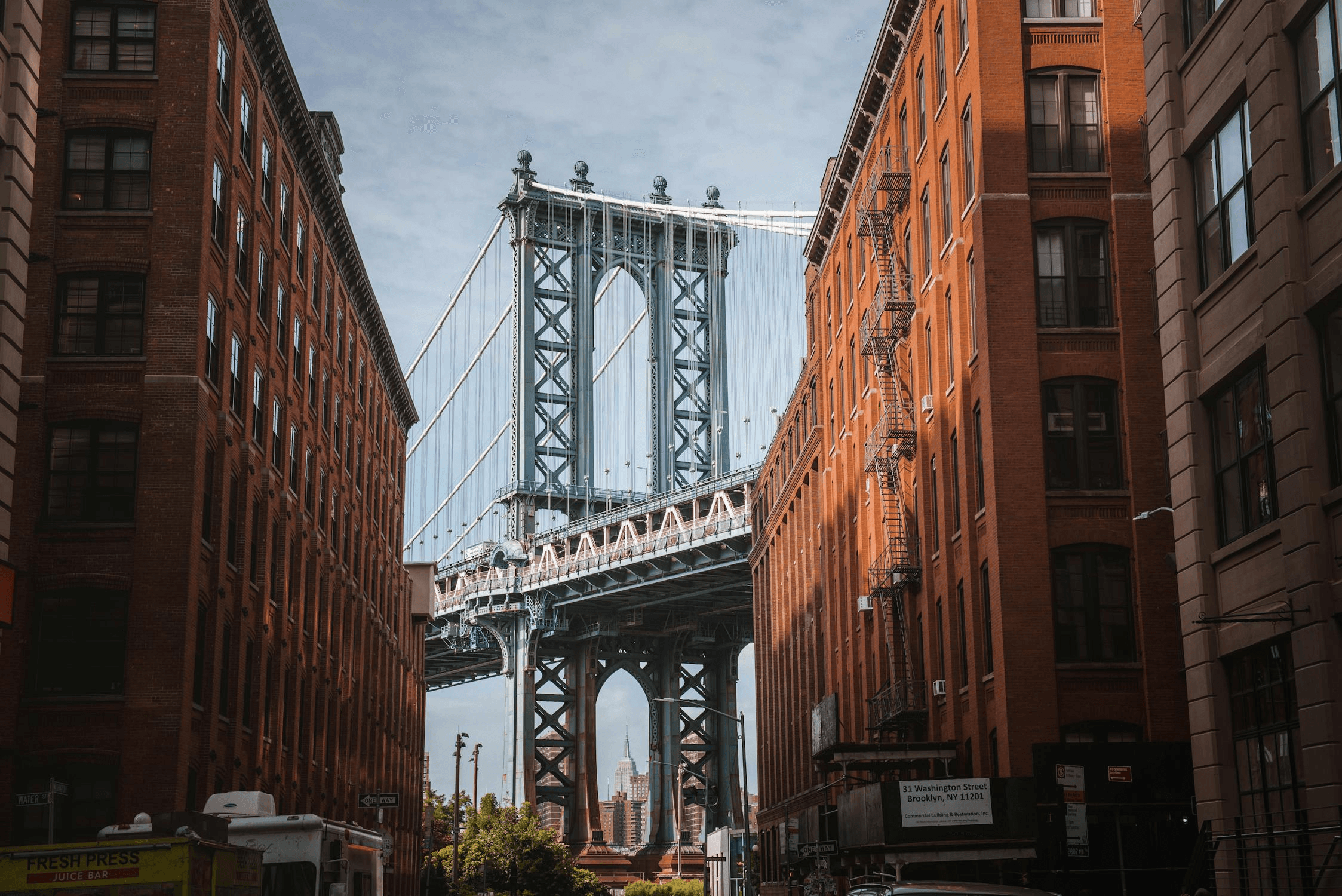 3.Walk around Brooklyn
3.Walk around BrooklynBrooklyn, a vibrant borough of New York City, is a melting pot of cultures and history. Known for its diverse neighborhoods, you can explore hipster havens like Williamsburg and Bushwick, stroll through the historic streets of Brooklyn Heights, or savor the multicultural vibes of Sunset Park. From the iconic Brooklyn Bridge and bustling Coney Island to the serene beauty of Prospect Park, Brooklyn offers something for everyone. Its thriving arts scene, with galleries, theaters, and live music venues, makes it a cultural hotspot. Plus, foodies will love the eclectic mix of cuisines available, from artisanal bakeries to authentic ethnic eateries.
- 1
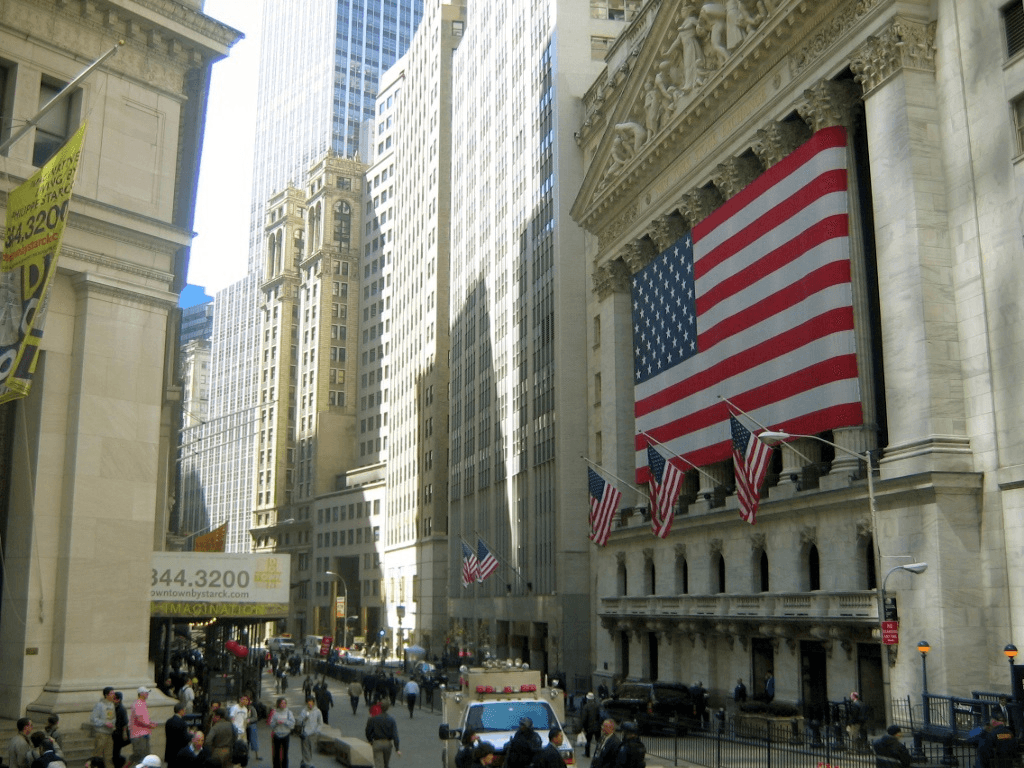 5.Visit Wall Street
5.Visit Wall StreetWall Street, located in the Financial District of Lower Manhattan, is not just the heart of America's financial industry but also a cultural landmark deeply woven into the fabric of New York City. It's famous for being the epicenter of financial markets, home to the New York Stock Exchange (NYSE) and several other major financial institutions. This iconic street has been depicted in numerous movies and TV shows, such as "The Wolf of Wall Street," "Trading Places," and "Billions," symbolizing both the allure and pitfalls of high finance.
- 2
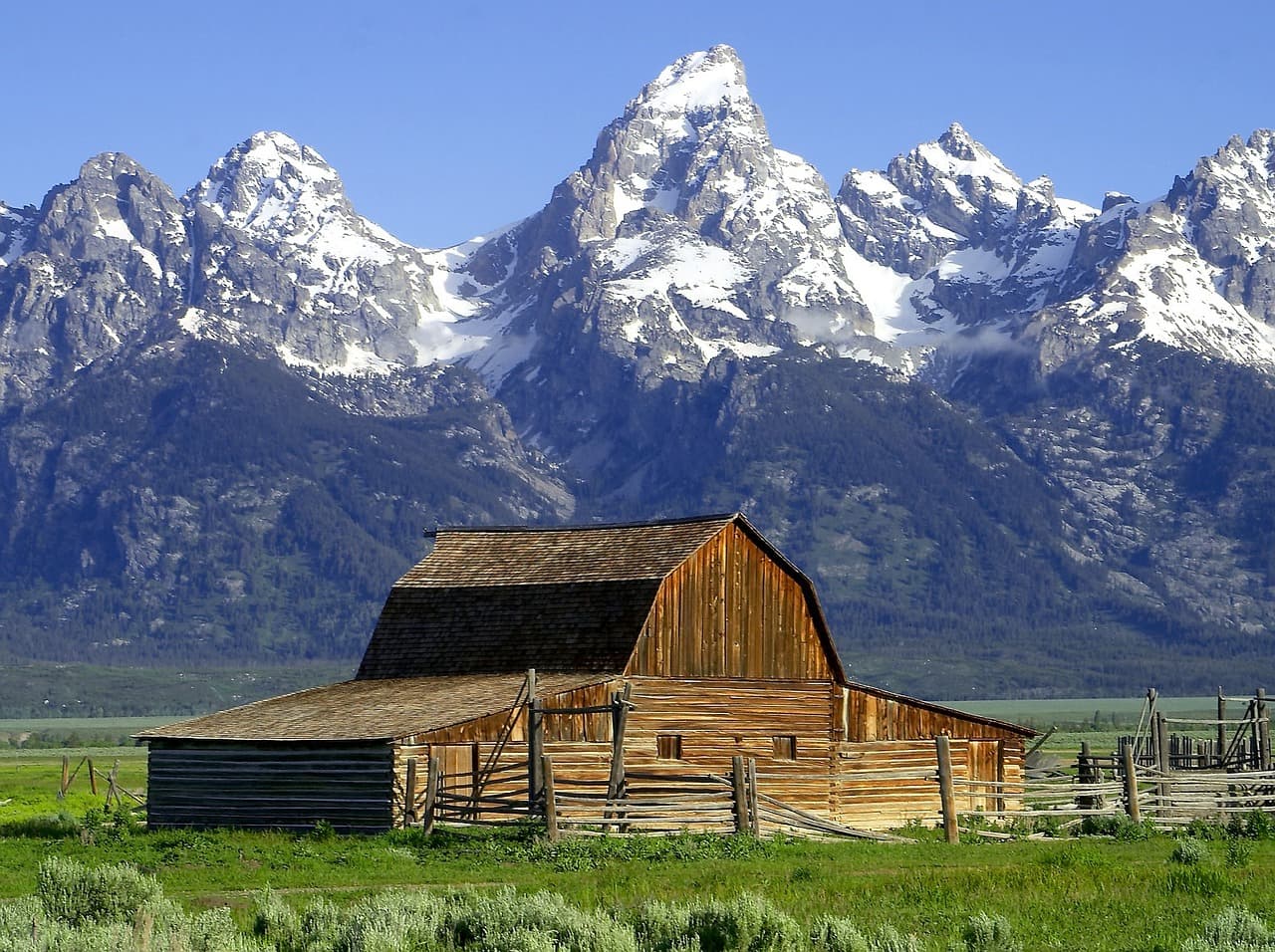 4.Wyoming
4.WyomingThe most rectangular of them all. But seriously, it's a great state! Lots and lots of nature, plenty of mountains and bisons. It is also home to Yellowstone National Park, the first national park in the U.S.
- 1
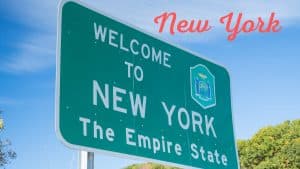 7.New York
7.New YorkHome of NYC and Niagara Falls. There is no city like NYC, and you're just a train ride away from the beautiful Hudson Valley.
- 0
 4.Pierogi Ruskie
4.Pierogi RuskieThe quintessential Polish dish. Made with white cheese, potatoes, salt, pepper, and onions. Topped with sour cream and bacon. Yum!
- 0
 5.Currywurst
5.CurrywurstCurrywurst is a German street food made of a pork sausage, usually a bratwurst, that's grilled or fried, then sliced into bite-sized pieces. It's topped with a curry-flavored ketchup sauce—basically a mix of ketchup, curry powder, and sometimes extra spices like paprika. It’s often served with fries or a bread roll to mop up the sauce. It was first made in Berlin in 1949 by a woman named Herta Heuwer, who got ketchup and curry powder from British soldiers after World War II. She mixed them up, poured it over some sausage, and started selling it at a street stand. It caught on fast, especially with construction workers rebuilding the city. Today, you can find currywurst all over Germany, but Berlin is still its unofficial home. There used to be a whole museum dedicated to it, which shows how much people love the stuff. You usually get it on a paper plate with a tiny wooden fork, and everyone has their preference—some like more curry powder on top, others a spicier sauce. Volkswagen even makes its own currywurst for employees, which is a bit wild when you think about a car company also being a sausage producer. All in all, it’s simple, messy, and filling—the kind of food you grab when you’re hungry and don’t want to overthink it.
- 2
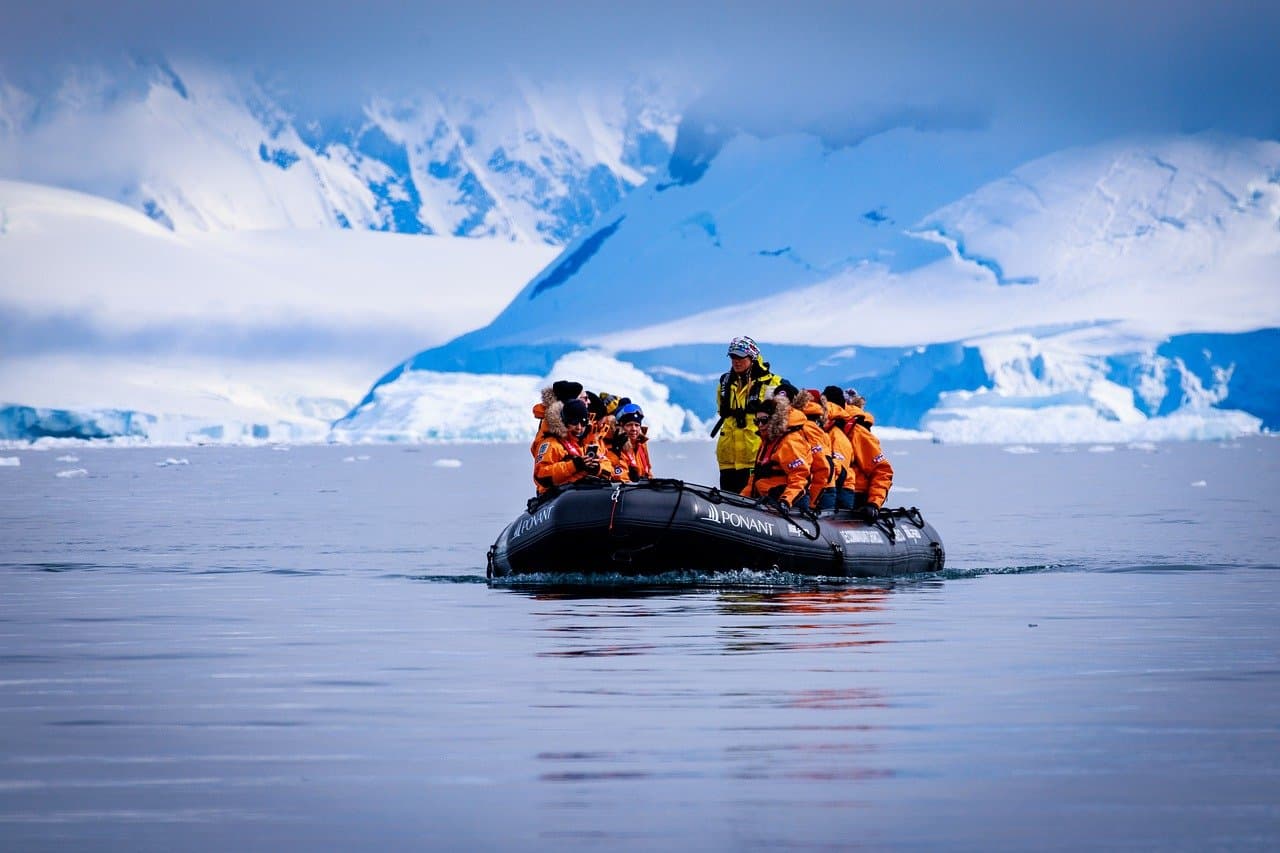 1.Antarctic Cruise
1.Antarctic CruiseAntarctica remains one of the least-visited places on Earth due to its remoteness and challenging environment. An Antarctic cruise offers adventurers unique, pristine landscapes, abundant wildlife (penguins, seals, whales), exciting activities (kayaking, hiking, camping) in one of the world's most remote locations.It's an adventure few others have experienced!
- 0
 2.Pathpal
2.PathpalPathpal is an AI powered trip planner that finds local spots and hidden gems seamlessly. It uses state of the art and proprietary AI to scan the web for off the beaten path locations and seamlessly weave them.
- 1
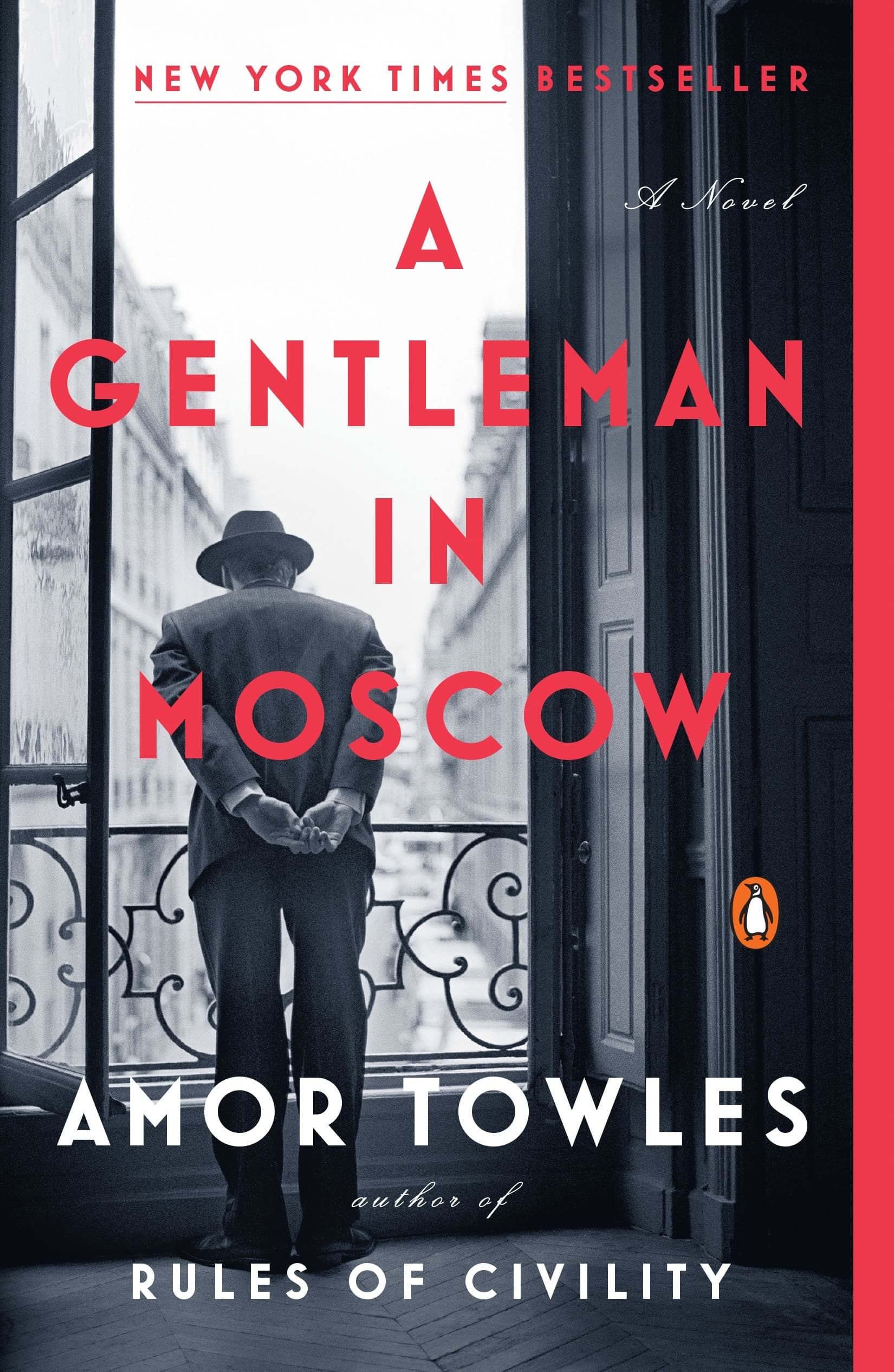 2.A Gentleman in Moscow by Amor Towles
2.A Gentleman in Moscow by Amor TowlesA Gentleman in Moscow is a historical fiction novel by Amor Towles. It follows Count Alexander Rostov, a Russian aristocrat who, after the Bolshevik Revolution, is sentenced to house arrest in the grand Hotel Metropol in Moscow. Instead of being imprisoned in a cell, he’s confined to the hotel, which becomes both his cage and his world. The story spans several decades, starting in the 1920s and running through key moments of Soviet history. Most of it unfolds inside the hotel, which is no ordinary place—it's a bustling, self-contained universe. Rostov, who begins the story living in a lavish suite, is forced to move into a tiny attic room. Despite this fall from grace, he navigates his new life with wit and charm, forming friendships with the hotel staff, guests, and unexpected visitors. The book isn’t just about the Count’s personal journey—it’s also about how time changes people and places, how history creeps in even when you’re standing still, and how small acts of kindness and loyalty can shape a lifetime. The setting, the Metropol, is richly described, from fine dining rooms to back corridors. There’s a good bit about food, music, and Russian culture, and plenty of philosophical musings, but it never gets too heavy. At its core, the novel is about making the best of what life throws at you. The Count is an old-world gentleman stuck in a new world that wants to forget people like him. How he handles that—sometimes with grace, sometimes with stubbornness—is what makes the book compelling. It's quietly dramatic, occasionally funny, and surprisingly heartwarming, all without needing big action scenes.
- 0
 13.Glacaialith
13.Glacaialith........................................................................................................................................................................................................................................................................................................................................................................................................................................................................................................................................................................................................................................................................................................
